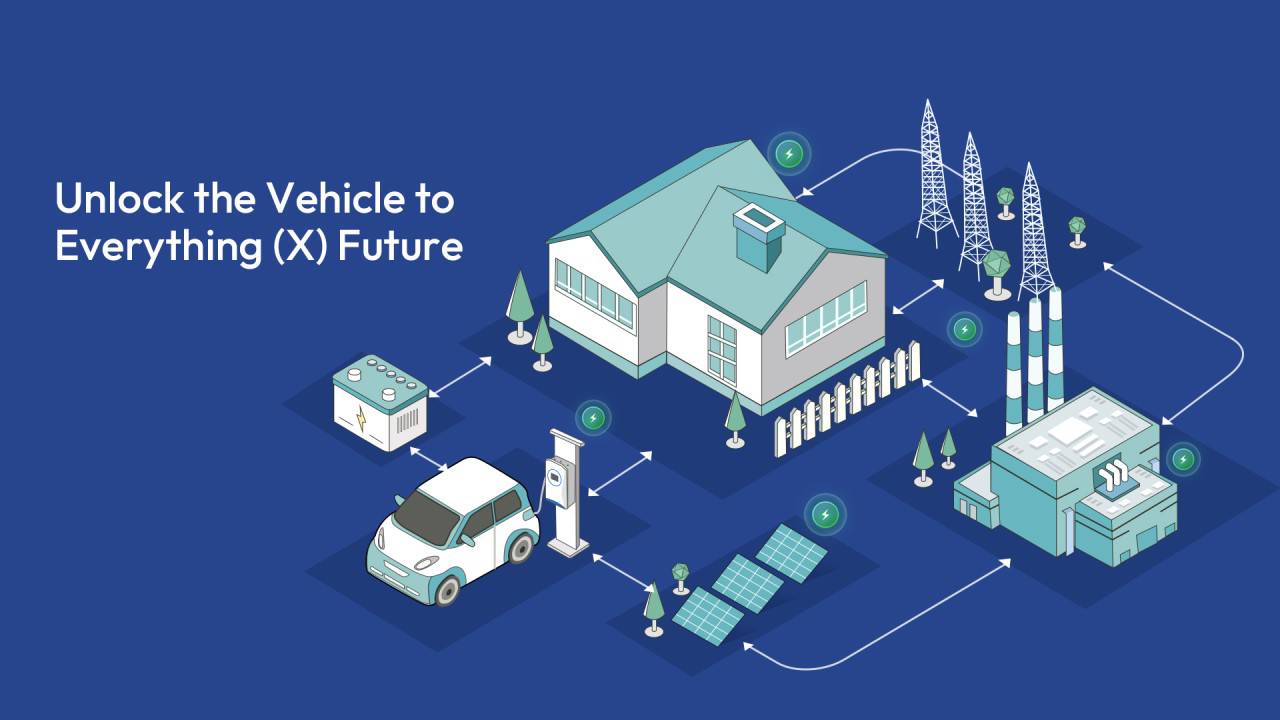Can you imagine that the electricity can move as flexibly as information does on the internet? It’s called Energy Interconnection actually. Before, electricity can flow in one way only, from the generation side to the user side. And how much electricity for use was largely determined by the amount that was generated. Now, with energy storage devices and energy routers, electricity can be stored and converted freely.
Electric vehicle can be one of the most ideal energy storage device so far. Electric transition is unstoppable. Bloomberg forecasted that global passenger EV sales will top 16.7 million in 2024 and it has seen a sharp year-over-year growth these years. To date, more than 300 million passenger cars have been registered in China. Assume that the EV adoption would approach 50% in the next 10 years by prediction, so the number of electric vehicles will hit 150 million, making a total of 12 billion kWh battery capacity, equivalent to 4 times of the daily electricity consumption of the whole country. In this case, is it possible to realize central power dispatching of all the electric vehicles by overall supply and demand in one region?
Introduction of V2G
Ewicharge started V2G R&D in 2016, but it wasn’t until 2018 that it welcomed real production. It was such a bold decision in those days as V2G technology seemed much ahead of time. Only 1 million electric vehicles were there then, so what’s the point of vehicle-to-grid interaction?
Starting from 2019, the State Grid planned to deploy V2G demonstration charge points in some major cities. Ewicharge was naturally selected as the most qualified candidate supplier. Undoubtedly, our V2G charger went through smooth functional testing and commissioning along with the State Grid, marking the first V2G charger in real operation globally. Later our V2G charger was also tested successfully on some renown EV brands, such as Geely, Nio, Great Wall and BYD as well as with auto makers like SAIC Motor and Basic Group.
The core essence of V2G lies in the V2G charger module that enables energy to flow in a bidirectional manner. BEG1K0100G pioneered SiC design and therefore could achieve 1.5% higher power conversion efficiency than non-SiC power modules do. It’s also compatible in size and interface with traditional DC charger modules, facilitating hassle-free V2G upgrading among standard DC charging stations. Meanwhile, LBG1K0120G represents the latest liquid-cooled V2G charger module with even higher power density and reliability but zero audio noise in operation.
Current Ewicharge V2G chargers include 7kW V2G/V2H charger for single-phase home use, 11kW V2G charger that can be integrated with solar and energy storage systems for commercial facilities, and 22kW/44kW/132kW V2G charger to help balance the power supply and power demand between the Grid, EV battery, energy storage system and renewable energy through local or remote energy management system.
Vehicle to Everything
For EVs to stay idle for hours, they can be connected to the Grid and respond to the Grid demand with the help of V2G chargers. The V2G charger is regarded as an energy router that allows electricity to move from a power source to EV battery as well as from the EV battery to everything, V2G, V2H or V2L, to name a few.
V2G stands for vehicle-to-grid and refers to bidirectional charging between an EV and the grid. V2G allows an EV to send electricity back to the grid when it is needed or requested by the grid operator or the utility owner. V2G can provide grid services such as frequency regulation, voltage control, peak shaving and demand response. V2G can also enable peer-to-peer energy trading between EV owners and other grid users.
V2H stands for vehicle-to-home and refers to bidirectional charging between an EV and a home. V2H allows an EV to send electricity back to a home when it is needed or requested by the homeowner or the home energy management system. V2H can provide backup power to a home in case of a blackout or an emergency. V2H can also enable self-consumption of renewable energy generated by a home solar system or a home battery.
V2L stands for vehicle-to-load and refers to bidirectional charging between an EV and a load. A load is any device or appliance that consumes electricity, such as a refrigerator, a coffee maker, a laptop, or another EV. V2L allows an EV to send electricity to a load when it is needed or requested by the user or the device. V2L can provide portable power to a load in case of a lack of access to the grid or a charging station. V2L can also enable power sharing between EVs or other loads.
Other V2X applications include V2F (Vehicle to Factory) and V2V(Vehicle to Vehicle), in which an EV can be a flexible and movable energy storage device and an V2X charger is an energy facilitator for Energy Interconnection.
